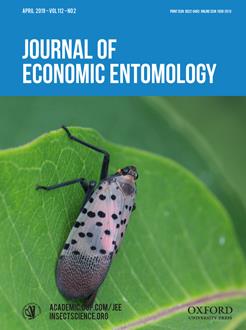The two-spotted spider mite, Tetranychus urticae Koch (Acari: Tetranychidae), is one of the most important pest species, because it devastates many horticultural and ornamental crops and fruit trees. In the present study, we explored a field strain that was collected in January 2001 and then selected for 16 years for acequinocyl resistance. The resistance ratios calculated for the LC50 value in the laboratory-selected acequinocyl-resistant (LSAR16) strain was 4,237-fold higher than that of the susceptible strain. Pretreatment with the synergists piperonyl butoxide and S,S,S-tributyl-phosphorotrithioate significantly increased the toxicity of acequinocyl to the LSAR16 strain. Crossing experiments revealed that the resistance in the LSAR16 strain was maternally inherited, dominant, and monogenic. Furthermore, among individuals in the LSAR16 strain, 85.5–98.5% had the I256V mutation and 98–99% had the N321S mutation in mitochondrial cytochrome b.These results suggest that these two new point mutations contribute to acequinocyl resistance in T. urticae.
How to translate text using browser tools
5 January 2019
Acequinocyl Resistance Associated with I256V and N321S Mutations in the Two-Spotted Spider Mite (Acari: Tetranychidae)
Sung Il Kim,
Hyun-Na Koo,
Yeseul Choi,
Bueyong Park,
Hyun Kyung Kim,
Gil-Hah Kim
ACCESS THE FULL ARTICLE
It is not available for individual sale.
This article is only available to subscribers.
It is not available for individual sale.
It is not available for individual sale.

Journal of Economic Entomology
Vol. 112 • No. 2
April 2019
Vol. 112 • No. 2
April 2019
acequinocyl resistance
point mutation
synergism
Tetranychus urticae





